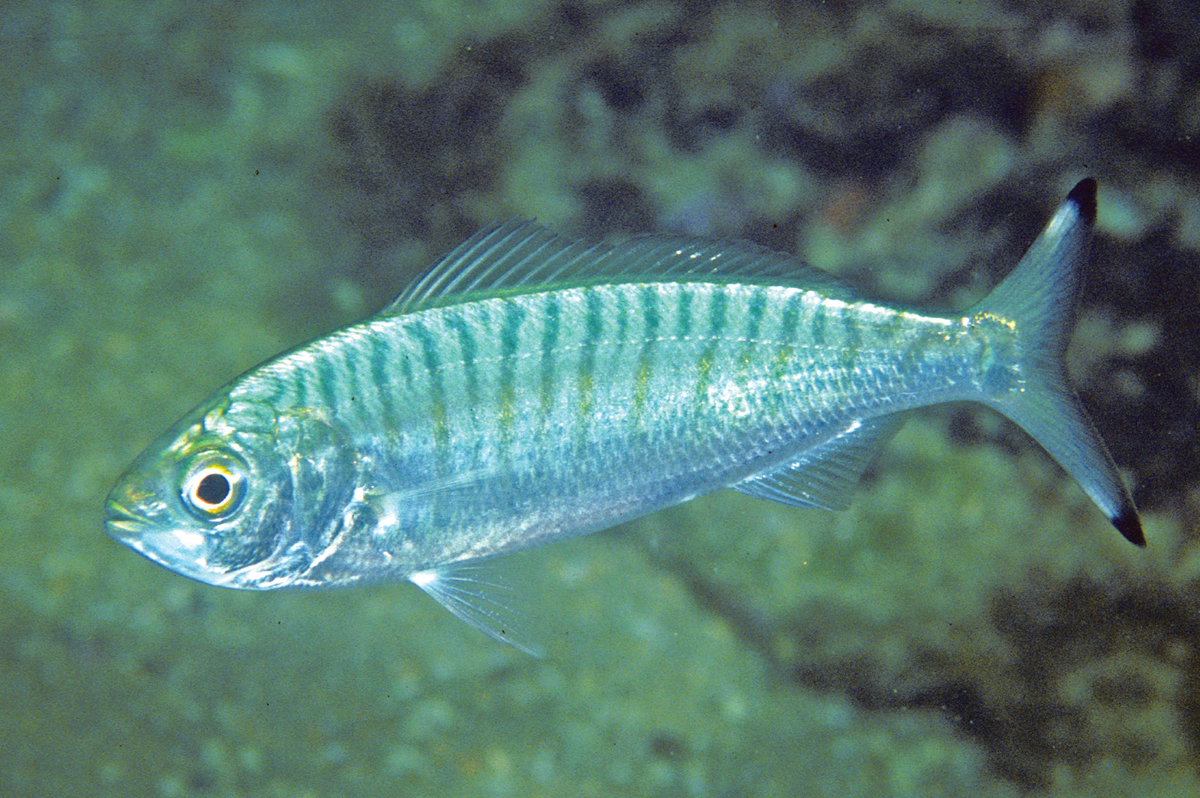Australian herring
(Arripis georgianus)

Description
The Australian herring (Arripis georgianus), also known as the ruff, tommy ruff, or Australian ruff, is one of four Australasian fish species within the genus Arripis. It closely resembles its sister species, the Australian salmon, although it grows to a smaller size. Like the other members of its genus, it is found in cooler waters around the southern coast of Australia. It is not biologically related to the herring family Clupeidae. In Australia, additional vernacular names used for this fish include bull herring, herring, rough, ruffies, sea herring, tommy, tommy rough and South Australian roughy. Ruff is the global fisheries name used by the Food and Agriculture Organization. The Australian herring has a streamlined, moderately deep and slightly elongate body which is somewhat compressed and has a relatively thin caudal peduncle. It has a quite small head with rather large eyes and a moderately large oblique mouth with the maxillae extending as far as the level of the centre of eyes. It has a narrow band of small, pointed teeth on each jaw. It has an almost straight lateral line. The whole of the head and body, except for the lower jaw, snout and over the eyes is covered in small, finely ctenoid scales. The long dorsal fin has a small notch between the higher spiny and the soft rayed parts, They have a small anal fin which is around half the length of the soft part of the dorsal fin. The caudal fin is deeply forked, the pectoral fins are small and the pelvic fins are moderately sized, having their origin underneath the centre of the pectoral fin base and extending midway to the anus. Australian herring are similar to the juveniles of the congeneric Australian salmon and differ from that species by their comparatively larger yellow and black eye and rounder head. This species is silver in colour with black tips on tail and gold spots along the upper body. The juveniles have dark golden bars on their flanks. The dorsal fin contains 9 spines and 16 soft rays and the anal fin has 3 spines and 10 soft rays. The maximum fork length recorded is 41 centimetres (16 in) but they are commonly 25–30 centimetres (9.8–11.8 in). The Australian herring is endemic to the temperate seas of southern Australia from the Swan River in Western Australia along the south coast and along the east coast as far north as Forster, New South Wales. It is also found around Tasmania.
Taxonomic tree:







